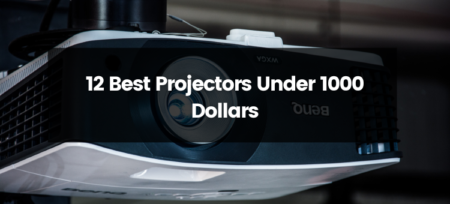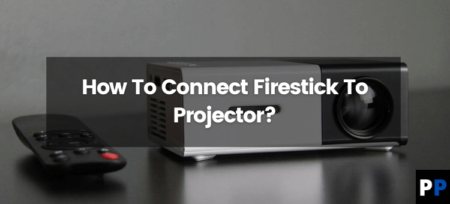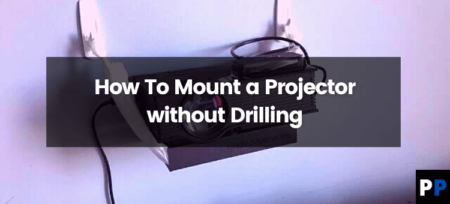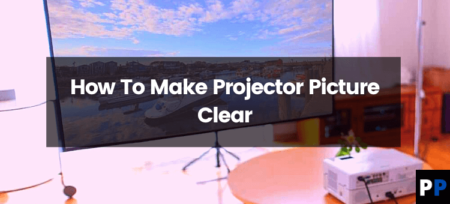Modern projectors are equipped with a variety of wireless options. Wireless technology eliminates the need for wires completely.
Using a wireless HDMI extender kit, you could make wireless connections for your projector to Xbox, PlayStation, TV Tuner, Computer, and other gadgets.
The only thing that a projector is required to possess is its power cable. At present, there’s no change to this. If you set your projector on a TV stand or coffee table, there are many ways to power it up and conceal cables for power. But, if you’re using the ceiling-mounted projector, things can be a bit complicated.
So, we’ll learn about how to connect power to a ceiling-mounted Projector in four easy steps by following this simple guide.
How to Run Power to a Ceiling Mounted Projector?
- Locate a power source inside the ceiling or in the attic
- If not, then you can use the power kit or connect an additional power line
- Find a power cable that is adequate in size
- With the new power outlet, check the projector
Locate A Power Source Inside The Ceiling or In The Attic
Most modern homes and apartments have televisions in the bedroom or living room. So, there are plenty of outlets in which the TV will be. Furthermore, other outlets around the room are located close to the floor, and other outlets are at shoulder or waist length.
With the growing popularity of the projector, it may be possible that your apartment or home includes a ceiling or top-mounted power outlet. If your home has an attic, you have the possibility that a power outlet is located inside the attic.
Before making any connection ensure that your projector is located in the middle of the screen; the projector should be found in the horizontal center of your screen.
Once you’ve finalized the projector’s location, you no longer need to take the next step of ensuring that you power the projector.
There might be an outlet for power within the ceiling or attic. In this scenario, you’ll be able to connect the power cord of your projector with the electrical outlet. Most projectors’ power cord ranges between 3 and 4 feet long. If the line isn’t long enough to connect to the electrical outlet, be sure you get a more extensive power cord.
In such a situation, you could be enticed to connect a power cord extension cable. But, projectors consume lots of energy. An extension cable for a power cord could not be able to handle the massive power surge or supply an uninterrupted power supply on the projected device. Furthermore, an extension cord could be unsafe when not used properly.
Using A Cable Power Kit system
The basic idea is that the Cable Power Kit runs an extension cord from the power source to the power grommet. The cable-powered kit, such as the Legrand-Wiremold CMW70, is equipped with the complete Wall cable control system. The device will require some time to work. Therefore, it’s crucial to know what you’re doing in advance.
Imagine that you need to install a power outlet in another place (for instance, the ceiling). However, an unplugged power socket is close but far from your projector. In this situation, an electric power cable kit can pull power directly from an unplugged power outlet and connect it to a grommet using an extension of the power cord.
The following video gives an excellent idea of how to utilize the power of a cable. In the future, you can use the power cable kit to place the power grommet next to the projector.
Adding An Entirely New Power Socket
Using the Cable Power Kit seems a little difficult for you. You could call an electrician to ask for a new power socket for the projector.
Depending on the electrician’s expertise, the task may require some time to plan to achieve the desired outcome. Be sure to be precise (to an electrician) about the work you plan to accomplish and the results you’re hoping to achieve.
Then, the work must be completed safely and without loose ends. Unprofessional work can result in electrical issues at some point.
To ensure your future security, you should install power outlets instead of one. This will mean that you don’t need to go through this process to start over with another electrical device that is mounted to the ceiling.
Get A Sufficient-Sized Power Cable
As I mentioned, most projectors have a 2 or 3-foot power cord.
If the screen is near the spot of the access point source of power. In this case, the longer power cord may hang too far or require rolling over the mounting on top of the ceiling, which is not advised. In this case, I suggest using the 1-foot power cord to eliminate any further stretch.
However, if your power source is away from the projector, purchasing a 6 – or 10-foot power cord is recommended, depending on the distance. On Amazon, you can locate 25-foot and larger power cords for those who want to use an extremely far power outlet.
Testing The Projector
When you’ve finished the power cord and outlet procedures. Now it’s time to verify whether everything is working or not.
Before connecting your projector to the new electrical outlet, suggest connecting an older lamp or electrical device to the outlet first. It will avoid your projector flowing out of service in case of a problem.
If everything goes as planned, you can connect your projector to the newly-installed power source. If everything goes well, then you’ve successfully powered a ceiling-mounted projection.
Then, you can ensure that your projector is correctly aligned and make any necessary adjustments.
Conclusion
As you are aware, the majority of homes are constructed to be able to accommodate a television. So, all power outlets are positioned following the TV and its accessories.
So, if you’re planning to mount a projector on the ceiling and projector, it could be a bit difficult initially. But, if you follow these steps, you will be able that you are first looking for a ceiling-mounted power socket or power socket located in your attic. You can install an electric cable or a brand new power socket to your desired spot if there isn’t one.
When everything is in order, ensure that the new configuration is working as it should and that there are no issues in the future.
Thank you so much for reading this article, hope you like the article and it may help you in solving your problem. Take care













